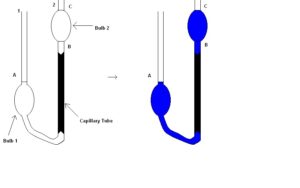
Many lubricant applications require the lubricant to perform across a wide range of conditions, for example, automotive lubricants are required to reduce friction between engine components when the engine is started from cold (relative to the engine's operating temperatures) up to 200 ☌ (392 ☏) when it is running. If the lubricant is too viscous, it will require a large amount of energy to move (as in honey) if it is too thin, the surfaces will come in contact and friction will increase.

Generally, the least viscous lubricant which still forces the two moving surfaces apart to achieve " fluid bearing" conditions is desired. The viscosity of a lubricant is closely related to its ability to reduce friction in solid body contacts. The VI was originally measured on a scale from 0 to 100 however, advancements in lubrication science have led to the development of oils with much higher VIs. The higher the VI, the more stable the viscosity remains over some temperature range. The lower the VI, the more the viscosity is affected by changes in temperature. It is mostly used to characterize the viscosity-temperature behavior of lubricating oils. The viscosity index ( VI) is an arbitrary, unit-less measure of a fluid's change in viscosity relative to temperature change.

JSTOR ( May 2018) ( Learn how and when to remove this template message).Unsourced material may be challenged and removed. Please help improve this article by adding citations to reliable sources. This article needs additional citations for verification.


 0 kommentar(er)
0 kommentar(er)
